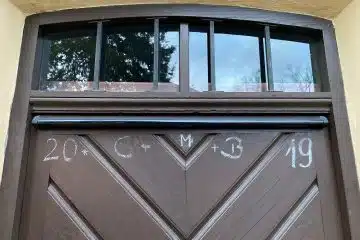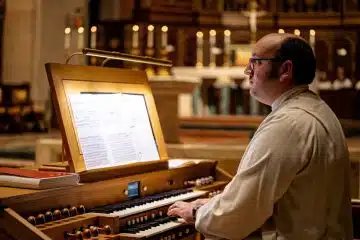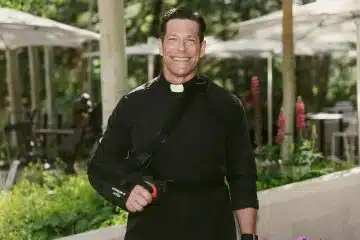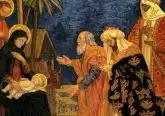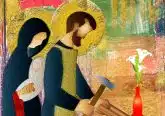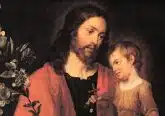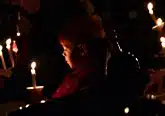The Catholic Moment: Beautiful and eternal
July 28, 2011
By Father Earl Fernades
Florence is one of the most beautiful cities in the world. A recent visit confirmed the impression the city made upon me two decades ago. There is a serenity to Florence not found in a metropolis like Rome. The vista from the Duomo helps one appreciate the city’s architectural beauty and the beauty of God’s creation.
Florence, like Siena, is also known for its artistic treasury. While there, many make the special effort to see the famous sculpture of David. Nearby is the Museum of San Marco, which houses the captivating collection of frescoes by Fra Angelico. Although the museum is small, I spent three hours there. Fra Angelico’s most famous fresco is the scene of the Annunciation. However, as I went from cell to cell (the museum used to be a Dominican monastery) I saw other “famous” frescoes: Jesus preaching the Sermon on the Mount; the Transfiguration; Jesus and Mary Magdalene in the Garden (Noli me tangere – “touch me not”); and the Mocking of Christ. Amid the busyness of modern life, the works retain their power to draw a person beyond the temporary and passing things of this world to the eternal and transcendent. For Fra Angelico, art was not merely work; it was a reflection of his deep spirituality and, ultimately, of the beauty of the eternal God.
While in Florence, I visited a glass and mosaic studio. The owner, an artist himself, is Massimo Mellini. His father, Michele, had run the studio before him. I asked Massimo how he became an artist. He explained that it started by watching his father. As a boy, Massimo would come to the shop and sweep the floors and run errands. He would observe the passion of his father in working with his hands and how his father wanted to make something lasting and beautiful for God and for the faithful.
Unfortunately, his father died suddenly when Massimo was just 15 years old. At that time, things were changing in the church. The number of churches asking for stained glass windows and mosaics plummeted. The emphasis was on the functional and technical.
He said, “I kept things going while I was in school, but those were very hard years. People looked down us, because we still worked with our hands and not machines. It was as if we were from a different age. We weren’t sophisticated. We were behind the times.”
I asked how things are now, and he answered, “Things are better. People again are beginning to ask for beautiful churches and art. We cannot live without the truly beautiful. People are tired of the ugly; the industrial; and the functional. Humans need the beautiful. There is something about us. We are made for the beautiful and eternal. When I work, it’s not really about the money. I contribute something of myself, of my spirituality, to the work. Through my work, I give something to God, to my children, and hopefully, I lead others to deeper communion with the One who is truly beautiful.”
“Communion with the One who is truly beautiful.” Isn’t that what the Christian life is about? Jesus is the good/beautiful Shepherd, whose inner beauty is outwardly manifested in His ministry and in His laying down His life for His flock. It is through the beauty of His goodness that He “draws all people to himself.” The beauty of the Shepherd is the model of life for the flock.
As Catholics, we don’t need to travel to Italy to discover and encounter the beautiful and the eternal or the beautiful and eternal One. On July 11, Father Jim Byrne, who was a month shy of 100, was laid to rest. The archbishops and 50 priests were there along, with his family, friends and former parishioners. Father Byrne modeled his life after the beautiful Shepherd. Everyone was drawn together. The Mass was celebrated, and there was peace. There was true communion. As they brought his casket out of church, there was a gentle breeze and silence. They played “Danny Boy” on the public address system, and people went away thinking not so much about their grief of this passing life, but about the beauty of eternal life that awaits the faithful Christian. It was another beautiful, Catholic moment.
Where do you discover the truly beautiful?
Father Fernandes is dean of the Athenaeum of Ohio/Mount St. Mary’s Seminary and an assistant professor of moral theology.





